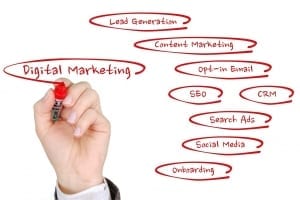How to Dominate Content Marketing in 2019

Make Sure You Have the Basics Down
Before you go to the chalkboard, you have to take a look at your current strategy. This is the time to gather your team and look at what worked and what needs to be adjusted. Examining your content strategy will allow you to quickly see if your previous plans are still relevant today.
You also need to have a clear and documented content strategy and make sure that everyone is aware of it. In a recent study by CMI, it was shown that businesses that had a clear content marketing strategy written down had five times more chances of being successful. Conversely, only 39% of B2B marketers said that they had one.
A good content marketing plan starts with identifying the main challenges that need to be addressed and the steps that will be taken to overcome them. Some points of interests such as SEO and lead generation are a great start, and you can start forming your strategy around them depending on what objectives you’re trying to meet.
Stay on Top of Recent Trends
You also have to be able to stay on top of recent trends and make sure that you incorporate them into your strategy when possible. For instance, live video is set to take off this year, and unless you have a strategy that will allow you to engage your audience directly, you’ll miss out on a lot of opportunities. Live video and webinars are a great way to build authority in your niche and increase brand awareness.
Voice search is another major trend that you can’t afford to overlook in 2019. The vast majority of users use their smartphones to look up business-related content these days, and the advent of smart voice technology has made voice search more popular than ever. And it’s showing no signs of slowing down. That means that you’ll have to learn how to incorporate query-based keyword phrases in your on- and off-page content to take advantage of all this juicy traffic.
So, make sure that you’re aware of all the latest trends and see which ones could be the most beneficial and easier to implement. If you want to learn about some of the biggest content marketing trends for 2019, you can check here for details.
Improve the Way you Distribute
The way we distribute content is also changing and many of the channels we used to use are slowly becoming obsolete. Creating good content is all fine and well, but unless you know how to distribute it properly, all of your efforts will be in vain.
First, you have to ask some specific questions to tell which distribution channels you should focus on. How do people get to your site? What devices does your audience use the most? What are your best performing acquisition channels? What content promotion frequency seems to work the best? What’s the ideal time to push content?
These are all questions that will allow you to fine-tune your distribution strategy and get better results. You’ll be able to adjust your distribution to fit your audience’s needs and become more efficient.
Focus on Your Best Performing Channels
You should also make sure that most of your efforts are towards your best-performing channels. Then you’ll be able to test the waters with other channels. And just because all of your competitors seem to be successful on one particular channel, it doesn’t mean that you should be there as well. If your competition is killing it on Twitter, for instance, it might be because of other factors that you may not be aware of. So, keep doing what works for you, and try studying what others are doing that makes them so successful on channels that might be underperforming for you.
However, always make sure that you’re aware of new channels and set some of your time and budget strictly for experimentation. Being ahead of the curb with new channels and technologies could give you a serious edge over the competition once they catch up. Whether it’s Facebook live, AI, or Snapchat, you have to leave space for trial and error. While you may fall flat on your face with some of them, you could also be at the forefront of innovation and already be ahead of the race when your competition comes in.
Narrow your Audience Down
Narrowing your audience down allows you not only to create a tailor-made marketing strategy that speaks to them but also allows you to stop wasting time on audiences that you’ll never be able to reach. You shouldn’t try to always reach the widest audience by any means necessary. It’s much better to concentrate your efforts on an audience that has more chances of actually converting later on.
If you narrow down your niche and learn how to deliver the kind of content that makes them tick, you will waste less time and money and will be able to increase engagement and your return on investment.
You also have to constantly put your core audience first and adapt to their needs. Look at advanced data and analyze their behavior. If their needs seem to be changing, these changes also have to be reflected in your strategy. New technologies, trends, and products can drastically change your audience’s habits, so making sure that you adapt will ensure that they stay engaged.
Conclusion
Dominating content marketing is possible if you have the proper plan in place and are committed to focusing your efforts on the right channels. Also make sure that you always keep track of results, have clear objectives, and constantly work to improve and embrace new strategies.




